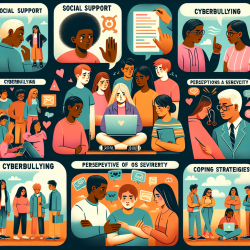Introduction
Suicide remains a critical public health issue, especially among adolescents. The 2019 Youth Risk Behavior Survey (YRBS) conducted by the Centers for Disease Control and Prevention (CDC) sheds light on the prevalence of suicidal ideation and behaviors among high school students in the United States. This data-driven analysis reveals significant demographic differences and trends that can inform practitioners working with youth.
Key Findings from the 2019 YRBS
The YRBS data indicates that 18.8% of high school students seriously considered suicide in the past year. This figure underscores the urgency of addressing mental health in this demographic. Notably, the prevalence was higher among females (24.1%) compared to males (13.3%). Furthermore, students identifying as lesbian, gay, or bisexual (LGB) reported higher rates of suicidal ideation (46.8%) compared to their heterosexual peers (14.5%).
Demographic Disparities
The survey highlights significant differences in suicidal behaviors across various demographic groups:
- Gender: Female students reported higher rates of suicidal ideation and attempts compared to male students.
- Race/Ethnicity: Black students reported the highest rates of suicide attempts, highlighting a critical area for targeted intervention.
- Sexual Identity: LGB students and those unsure of their sexual identity reported significantly higher rates of suicidal ideation and attempts.
Trends Over Time
From 2009 to 2019, the prevalence of suicide attempts among high school students increased overall, with notable increases among female, non-Hispanic white, non-Hispanic black, and 12th-grade students. This trend emphasizes the need for continuous monitoring and intervention efforts tailored to these groups.
Implications for Practitioners
Practitioners working with adolescents should consider these findings to enhance their intervention strategies:
- Implement Comprehensive Prevention Programs: Programs should address risk factors across individual, relational, community, and societal levels.
- Support Vulnerable Groups: Tailor interventions to support LGB students and racial/ethnic minorities, focusing on reducing stigma and promoting mental health.
- Promote Connectedness: Encourage strong connections between students and their schools, peers, and families to foster a supportive environment.
- Enhance Training: Equip educators and practitioners with skills to recognize and respond to signs of suicidal ideation effectively.
Encouraging Further Research
Given the complex nature of suicidal behaviors, further research is essential to develop effective prevention strategies. Practitioners are encouraged to stay informed about the latest research and adapt their practices accordingly.
Conclusion
The 2019 YRBS provides crucial insights into the prevalence and demographic disparities of suicidal ideation and behaviors among high school students. By leveraging this data, practitioners can implement targeted interventions to support at-risk youth and ultimately reduce the incidence of suicide.
To read the original research paper, please follow this link: Suicidal Ideation and Behaviors Among High School Students — Youth Risk Behavior Survey, United States, 2019.










